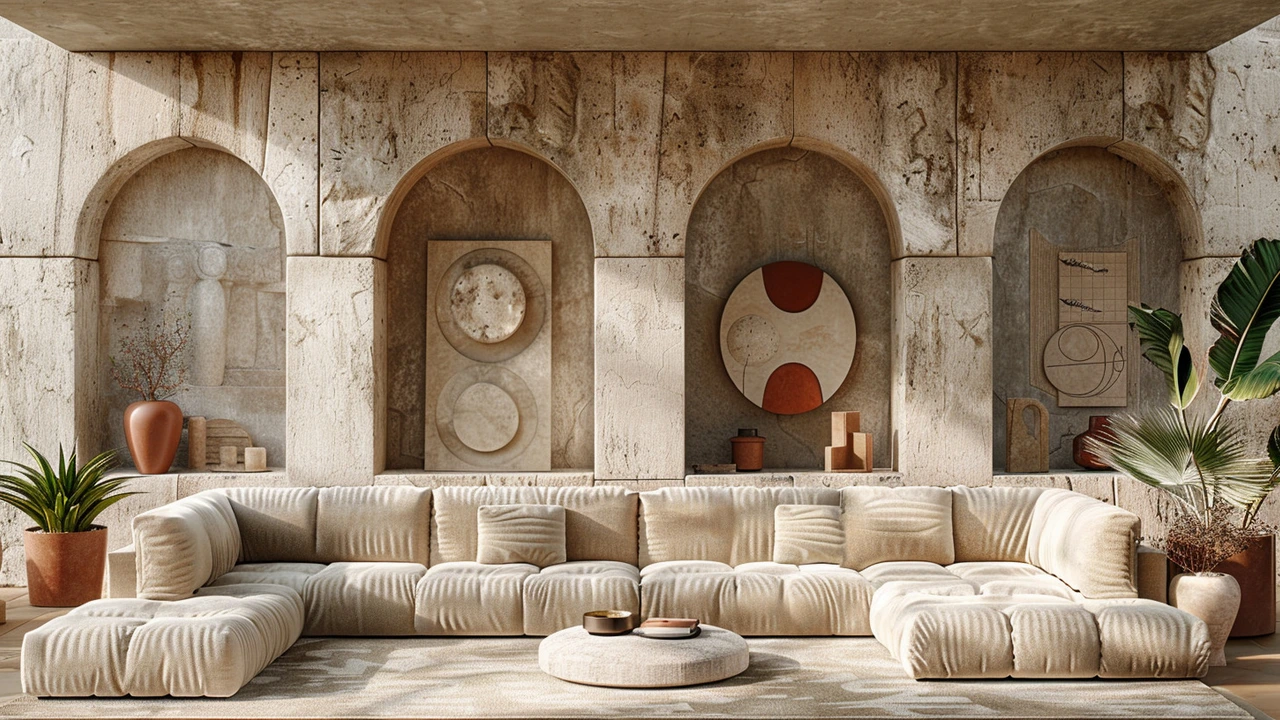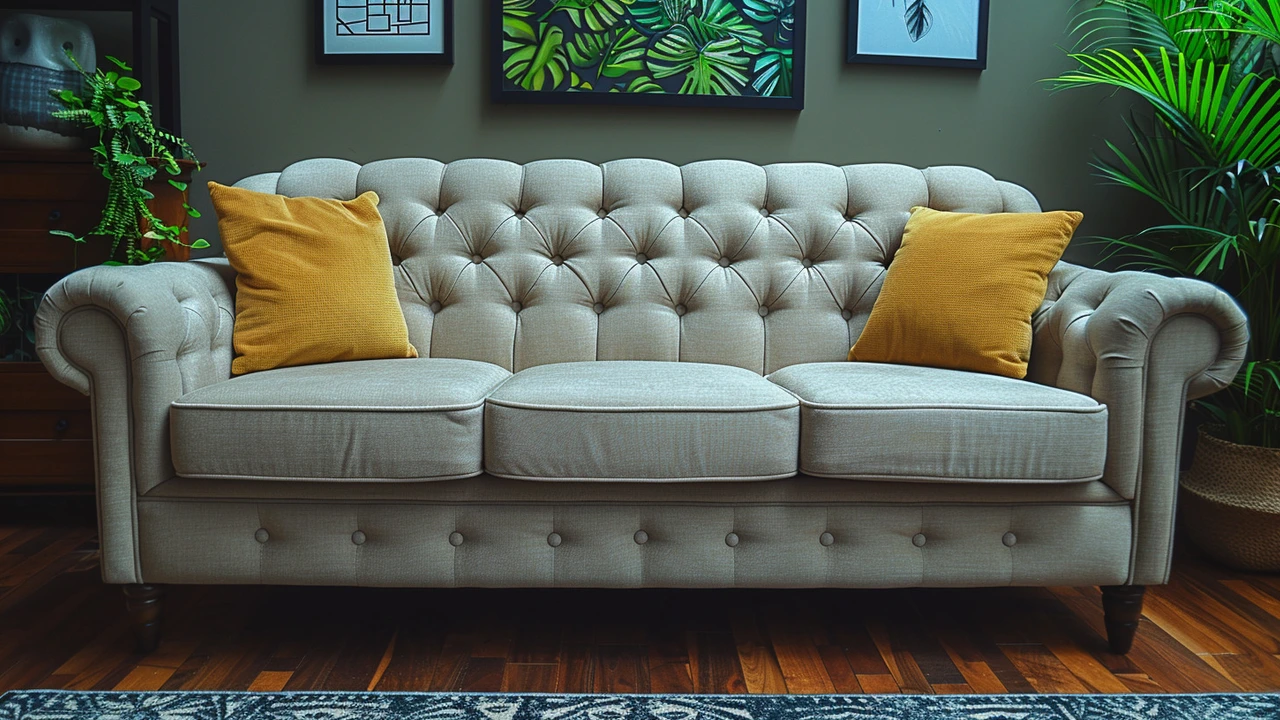Bauhaus has been a driving force in design since its inception in 1919. This German art school was not just an educational institution; it was the birthplace of a revolutionary movement that married functionality and aesthetics.
Although the Bauhaus school closed its doors in 1933, its impact is far from over. From the buildings we live in to the products we use daily, Bauhaus principles continue to shape the way we interact with our environment. The clean lines, geometric shapes, and efficient forms that characterized Bauhaus designs have become the cornerstone of modern architecture and product design.
The essence of Bauhaus lies in its core principles: simplicity, practicality, and the unity of art and technology. These ideals have been ingrained in contemporary design, influencing an array of industries. Knowing the origins and principles of Bauhaus can provide valuable insight into why this movement remains so influential and how it can inspire new generations of designers.
- Origins of Bauhaus
- Key Principles of Bauhaus
- Bauhaus in Modern Architecture
- Bauhaus and Everyday Products
- Influential Bauhaus Artists and Designers
- Incorporating Bauhaus into Contemporary Design
Origins of Bauhaus
The Bauhaus movement, officially known as the Staatliches Bauhaus, began in 1919 in Weimar, Germany. Founded by architect Walter Gropius, Bauhaus emerged at a time when the world was recovering from the devastations of World War I. Gropius envisioned a school that would merge fine arts with crafts, making art accessible and functional. His vision was to create 'a new guild of craftsmen, without the class distinctions which raise an arrogant barrier between craftsman and artist.'
A central tenet of Bauhaus was the idea that all arts, including architecture, typography, interior design, and industrial design, should work together in harmony. This integrated approach was revolutionary. Before Bauhaus, art and crafts were seen as distinct disciplines. Bauhaus broke down these barriers, advocating for a unity of art, craftsmanship, and technology. This holistic philosophy was intended to lead to the betterment of society and the democratization of design. An often-repeated aphorism from this period is 'form follows function,' which encapsulates Bauhaus's emphasis on practical, straightforward design.
The first few years of Bauhaus were marked by a spirit of experimentation. Prominent artists like Wassily Kandinsky, Paul Klee, and László Moholy-Nagy joined the faculty, contributing their diverse expertise. Each brought their unique influence to the curriculum. The school didn't just teach students to create; it pushed them to innovate and think critically about the role of design in the modern world. This period saw the introduction of preliminary courses focused on materials and their properties, which was a novel approach at the time.
Bauhaus wasn't without its challenges. Political pressures and financial difficulties plagued the institution. In 1925, the school relocated to Dessau, where it enjoyed a period of remarkable creativity. The Dessau years saw the construction of the iconic Bauhaus Building, designed by Gropius himself, which remains a paragon of modernist architecture. The influence of Bauhaus started to spread beyond Germany, permeating various design sectors across Europe and eventually, the world. In 1932, due to mounting political pressures from the National Socialist German Workers' Party, the school moved to Berlin. Unfortunately, it was forced to close in 1933.
Despite its relatively brief lifespan, the Bauhaus movement left behind a far-reaching legacy. Its alumni went on to found art schools, create influential works, and inspire movements in various countries. Bauhaus's impact is visible in our built environment, in everyday objects, and in the fundamental principles of modern design education. The streamlined, practical aesthetic popularized by Bauhaus is now a standard, showing just how profoundly this movement changed our world.
Key Principles of Bauhaus
The key principles of Bauhaus are deeply rooted in the quest for a unified and functional approach to design that prioritizes simplicity and usability without sacrificing beauty. At its core, Bauhaus seeks to merge the fine arts and crafts with practical application, creating an interdisciplinary approach that has influenced a myriad of fields.
One of the main tenets of Bauhaus is functionality. Every design element is intentional, with form following function. This manifests in clean lines, solid colors, and straightforward shapes. Designers avoid unnecessary ornamentation, focusing instead on how the object will be used and how it can serve its purpose efficiently.
Additionally, simplicity plays a crucial role in Bauhaus principles. By minimizing unnecessary components, designs become more intuitive and user-friendly. The minimalist aesthetic not only makes items easier to use but also more versatile and timeless. This simplicity ensures that Bauhaus designs remain relevant, no matter the era.
The Bauhaus movement also emphasizes the unity of art and technology. This principle advocates for the harmonious integration of artistic creativity with industrial production. By doing so, it bridges the gap between mass production and individual artistry. As a result, products can be both beautiful and accessible to the general public.
Another fundamental principle is the concept of total design, where every aspect of an environment is considered part of a cohesive whole. Bauhaus designers believe that architecture, interior design, furniture, and even everyday objects should all work together to create a unified aesthetic and functional experience. This holistic approach ensures that each element complements the others, contributing to overall harmony.
Moreover, Bauhaus places a significant emphasis on experimentation and innovation. Designers are encouraged to explore new materials and techniques, pushing the boundaries of what is possible. This willingness to innovate has led to groundbreaking developments in design, setting new standards and inspiring future generations.
The school’s founder, Walter Gropius, once said, "The ultimate goal of all art is the building!" This statement underscores the Bauhaus belief in the blending of disciplines to create comprehensive works of art that serve practical purposes.

Bauhaus in Modern Architecture
The Bauhaus movement revolutionized architectural design in ways that still resonate today. At its core, Bauhaus architecture is characterized by its emphasis on functionality, simplicity, and a lack of ornamentation. This approach was a stark contrast to the intricate and decorative styles that were popular before Bauhaus's rise. The architects who studied or were influenced by Bauhaus sought to create buildings that served the needs of their occupants while maintaining an aesthetic simplicity.
One of the most famous examples of Bauhaus in modern architecture is the Fagus Factory in Alfeld, Germany. Designed by Walter Gropius and Adolf Meyer in 1911, this factory exemplified the clean lines and open interior spaces that would become hallmarks of Bauhaus architecture. The use of glass and steel, coupled with the absence of decorative elements, highlighted the functionality and modernity that Bauhaus cherished. The Fagus Factory remains a UNESCO World Heritage Site and a testament to the lasting appeal of Bauhaus design principles.
Another notable example is the Barcelona Pavilion, designed by Ludwig Mies van der Rohe for the 1929 International Exposition. This pavilion showcased sleek lines, open spaces, and a masterful use of materials like glass, steel, and marble. Its minimalist design focused on clarity and simplicity, removing any unnecessary elements. This approach not only laid the groundwork for modernist architecture but also demonstrated the timeless elegance of Bauhaus principles.
In the United States, the influence of Bauhaus can be seen in the works of architects like Frank Lloyd Wright and Richard Neutra. Frank Lloyd Wright’s Fallingwater, although not strictly a Bauhaus design, embodies many of the movement’s principles, such as the integration of indoor and outdoor spaces and a focus on functionality. Richard Neutra's designs, particularly the Kaufmann House in Palm Springs, showcase the clean lines and simplicity that are quintessentially Bauhaus.
"Less is more" — a phrase famously associated with Ludwig Mies van der Rohe, encapsulates the Bauhaus approach to design. This mantra underscores the philosophy that every element in a design should serve a purpose, creating a harmonious and efficient environment.
Today, the principles of Bauhaus continue to influence contemporary architecture. Buildings like Apple's corporate headquarters in Cupertino, California, reflect the Bauhaus ideal of combining form and function seamlessly. The use of glass for transparency, open-plan spaces to promote community, and a minimalist aesthetic all draw from Bauhaus’s foundational ideas.
The Bauhaus influence extends globally, with architects around the world embracing its tenets. In Japan, for example, Tadao Ando's concrete structures echo the simplicity and clarity championed by Bauhaus designers. Meanwhile, in Denmark, Bjarke Ingels Group (BIG) integrates playful yet functional elements, inspired by Bauhaus, into their innovative architectural projects.
Incorporating Bauhaus principles into modern architecture not only honors a century-old tradition but also ensures that buildings meet the practical needs of today’s occupants while maintaining aesthetic appeal. By valuing simplicity, functionality, and integration with the environment, Bauhaus continues to shape the skylines and living spaces of our world. Whether through the use of modern materials, open floor plans, or minimalist design elements, the spirit of Bauhaus remains a driving force in contemporary architectural innovation.
Bauhaus and Everyday Products
The influence of Bauhaus is not confined to the realms of architecture or high art; it permeates the very fabric of our daily lives. From furniture to household items, the Bauhaus philosophy emphasizes practicality, minimalist aesthetics, and the harmony between form and function.
One of the most iconic examples is the Wassily Chair, designed by Marcel Breuer in 1925. Utilizing tubular steel and canvas, Breuer created a piece that was not only visually stunning but also highly functional and durable. The Wassily Chair’s design laid the groundwork for modern furniture, where efficiency and style coexist seamlessly.
The Bauhaus impact extends into the kitchen as well. Simple, practical designs that focus on usability can be traced back to this movement. An excellent example is the Braun SK4 record player, often referred to as ‘Snow White’s Coffin’, designed by Dieter Rams and Hans Gugelot in 1956. While it originated outside the official Bauhaus period, it's deeply rooted in Bauhaus principles. It’s a classic example of how Bauhaus ideas have been absorbed into product design, leading to tools and appliances that are as beautiful as they are functional.
“Good design means as little design as possible,” Rams often said, echoing the Bauhaus mantra of simplicity and functionality.
Even everyday objects like kitchen utensils or standard furniture pieces owe much to the Bauhaus design language. Simple, clean lines and an emphasis on functionality have become standards in these items. Look around your home, and you'll spot numerous products that, although not directly designed by Bauhaus members, are deeply influenced by this school of thought.
Take, for example, the humble table lamp. Most contemporary lamps focus on providing adequate light with a no-nonsense aesthetic, a clear nod to the Bauhaus principle of marrying form and function. The goal is to enhance user experience while maintaining a minimalist design. This same approach can be seen in various types of tools, electronic devices, and even clothing.
The longevity of Bauhaus principles in product design is a testament to the movement’s foresight. Bauhaus taught that the best designs serve people’s needs efficiently while also bringing aesthetic pleasure. This lesson continues to inform designers today, ensuring that Bauhaus remains a vital force in everyday products. Whether it’s an ergonomic chair or a sleek smartphone, the movement's legacy lives on in the items we use every day, proving that Bauhaus is not just a style but a timeless philosophy of design.

Influential Bauhaus Artists and Designers
Bauhaus produced some of the most celebrated artists and designers of the 20th century. Each individual brought unique perspectives and innovations that continue to influence modern aesthetics. Walter Gropius, the founder of Bauhaus, was not just an administrator but a visionary architect. He believed that art should meet functionality without sacrificing beauty—a philosophy that remains relevant.
Another key figure is Ludwig Mies van der Rohe, renowned for his aphorism 'less is more.' Mies van der Rohe's work exhibits a minimalistic yet impactful style, stripping away unnecessary elements to focus on essential forms. His architectural designs, such as the Barcelona Pavilion and the Seagram Building, epitomize this approach. Mies van der Rohe's legacy in modern architecture is indelible, proving the staying power of Bauhaus principles.
Paul Klee taught at Bauhaus and left a lasting mark with his expressive works that explored color theory and abstract forms. His teaching methods were innovative, challenging students to see beyond traditional forms and embrace a more free-form artistic approach. Klee's influence is evident in the way contemporary designers play with color and form to create engaging, thought-provoking spaces and objects.
Kandinsky, another major contributor, focused on the spiritual aspects of art. His abstract works prioritized emotional resonance over realistic representation. His emphasis on color and form as vehicles for emotional expression continues to inspire modern artists and designers to prioritize feeling and experience in their creations. A quote from Kandinsky encapsulates his vision: 'The artist must train not only his eye but also his soul.'
Marcel Breuer, a Bauhaus-trained architect and designer, is best known for his furniture designs, particularly the Wassily Chair and Cesca Chair. These iconic pieces use tubular steel and simple lines, embodying the Bauhaus ethos of merging craftsmanship with industrial techniques. Breuer's work demonstrates how everyday objects can be both functional and artistically significant, cementing his influence on modern furniture design.
Josef Albers brought his expertise in color theory to Bauhaus, later continuing his work at Black Mountain College and Yale University. Albers' series 'Homage to the Square' remains a powerful study in the perception of color and its interactions. His teachings and artworks profoundly influenced graphic design, interior design, and art education in the 20th century and beyond.
Finally, we cannot overlook Anni Albers, a textile artist whose intricate works bridged the gap between traditional crafts and modern art. Her textiles were not just decorative but functional, embodying the Bauhaus principle of 'form follows function.' Anni Albers' influence extends into the realms of fashion, interior design, and textile engineering, proving that Bauhaus's interdisciplinary approach is key to its enduring legacy.
Incorporating Bauhaus into Contemporary Design
Integrating Bauhaus principles into modern design isn't just a nod to history; it’s a guide to creating spaces and products that are both beautiful and functional. The Bauhaus philosophy centers on simplicity and utility, which is why its ideas are so timeless and applicable today. To bring Bauhaus influences into contemporary design, start by embracing clean lines and geometric shapes. This means opting for furniture and decor that favor straightforwardness over complexity.
One way to apply Bauhaus in home design is through minimalism. Choose pieces that serve multiple purposes. For example, a simple wooden table can function as a dining area and a workspace. Look for furniture that incorporates both form and function, like a sleek sofa with hidden storage. The color palette should be neutral, emphasizing natural materials such as wood, metal, and glass.
Architecturally, the Bauhaus approach can be seen in open floor plans and large windows that allow plenty of light. These elements create a sense of space and airiness, enhancing the living experience. By focusing on natural light, you also improve the well-being of those who inhabit the space. Opt for materials like steel and concrete, which are often used in Bauhaus buildings for their industrial and modern look.
When it comes to product design, Bauhaus can influence everything from kitchen appliances to tech gadgets. Items should not only be visually appealing but also incredibly functional. Bauhaus-inspired products often have sleek designs with ergonomic features. Companies like Apple have famously integrated Bauhaus principles, focusing on user-friendly interfaces and simple, sleek aesthetics.
The work of prominent designers from the Bauhaus movement continues to inspire. Marcel Breuer’s Wassily Chair and Marianne Brandt’s geometric lamps are iconic examples. These designs prioritize function while maintaining a distinct aesthetic, proving that practical items can be pieces of art.
Even graphic design benefits from Bauhaus principles. Typography should be clean and simple, utilizing sans-serif fonts that are easily readable. Grid-based layouts ensure a balanced and organized look, which is crucial for web design and print media. By sticking to a limited color palette and focusing on essential elements, a Bauhaus-influenced design remains uncluttered and effective.
For those looking to incorporate Bauhaus into their daily lives, start small by selecting everyday objects that reflect its principles. A well-designed tea kettle or a minimalist calendar can bring a touch of Bauhaus into your home. Over time, these small changes can add up, making your environment more in line with Bauhaus ideals.
“Design is not just what it looks like and feels like. Design is how it works,” said Steve Jobs, highlighting a core tenet of Bauhaus that remains relevant today.
Emphasizing the importance of function without sacrificing form has ensured the enduring legacy of Bauhaus. Whether through architecture, furniture, or everyday objects, the Bauhaus ethos of combining art, craft, and technology continues to shape our world.




